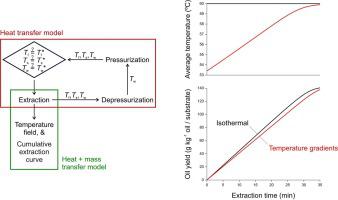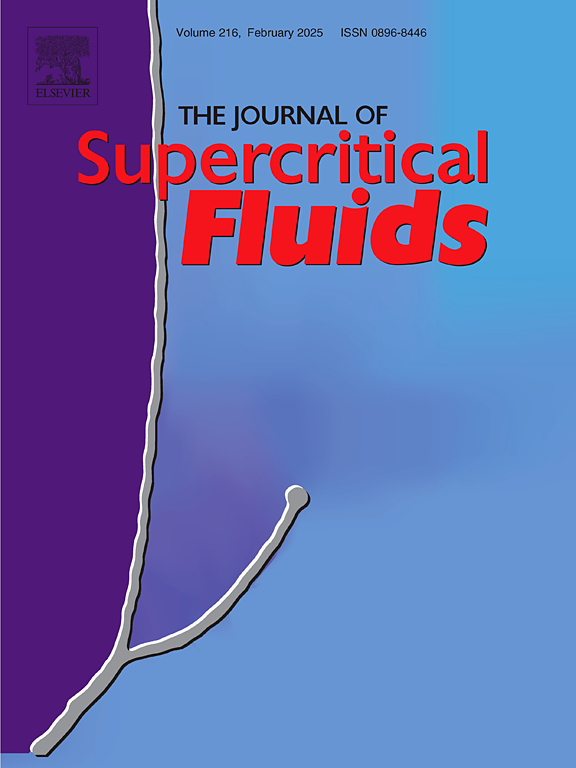Effect of heat transfer on the pressurization, extraction, and depressurization stages of a supercritical CO2 extraction process. 2. Simulation of a two-vessel industrial plant
Abstract
In this work, we simulated the heat transfer in a two-vessel (1-m3, length-to-diameter ratio of 4) industrial plant to assess the effect of the temperature gradients formed during the reconditioning stage on the extraction curves. We simulated the extraction of 1-mm particles using 5 mm/s of CO2 at 48 MPa and 40 °C (case with an imposed temperature gradient) or 60 °C (case with temperature gradients from the reconditioning stage), with the service fluid at 60 °C. The results of these non-isothermal extractions were compared with those obtained in representative isothermal cases. The temperature gradients slightly affected the cumulative extraction curves in non-isothermal cases. We considered the presence of a basket containing the solid substrate. We also changed the superficial CO2 velocity to 3 or 10 mm/s and the particle size to 0.50 or 1.25 mm to compare the extraction curves. The effects of the basket and the changes in superficial CO2 velocity and particle size were minor. We simulated a limit case with higher temperature and pressure (80 °C and 70 MPa), where the extraction time was extremely short (10 min) and more significant temperature gradients were formed during the reconditioning stage. We observed more significant differences at this extreme extraction condition than when using an isothermal process at the required extraction temperature.


 求助内容:
求助内容: 应助结果提醒方式:
应助结果提醒方式:


